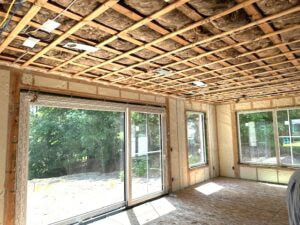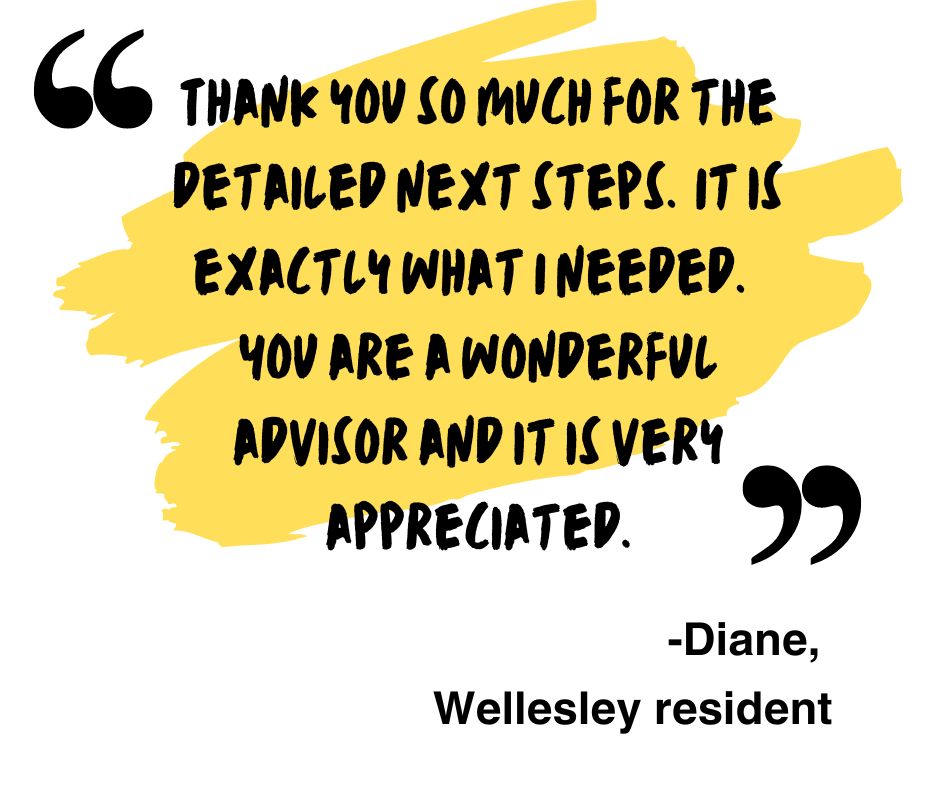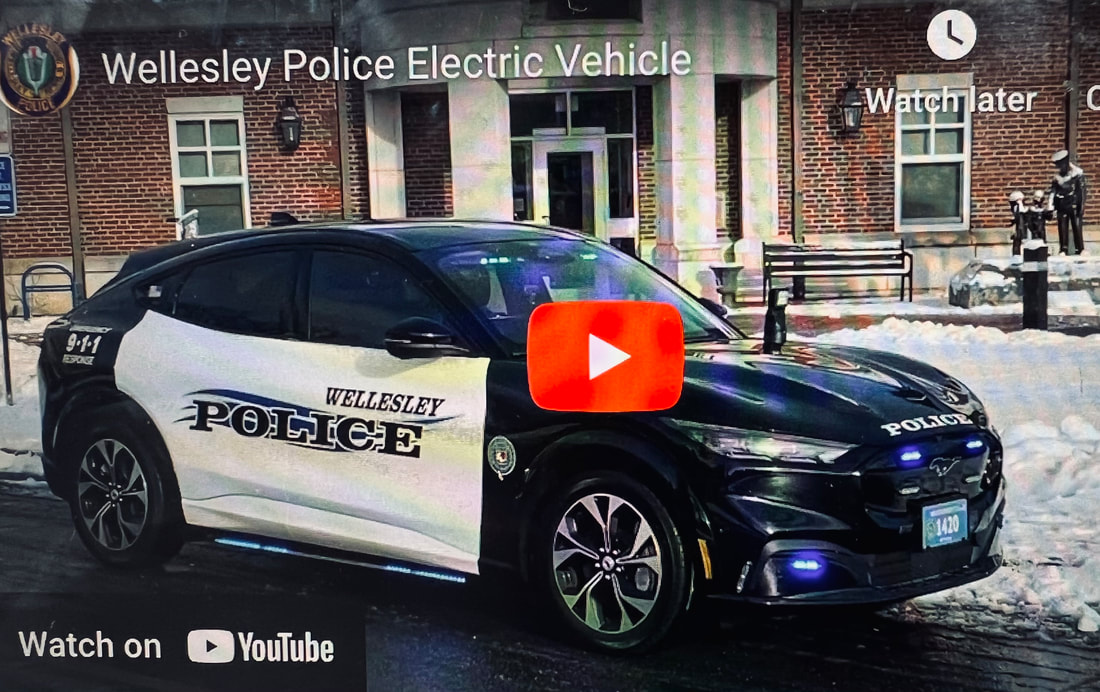|
Thanks Green Needham for this story!
Right down the street in Needham there is another example of net energy home. These super energy efficient houses generate enough solar power to provide all the electricity needed for the home’s heating, cooling, hot water, cooking, and other electrical systems. Green Needham has already profiled one family’s process of deciding to build a zero net energy home and condo neighbors who retrofitted their 1860-sq.-ft units to drastically reduce the carbon footprints. Now let’s take a look at another Needham home and learn more about the building techniques that create a home with no carbon emissions and no utility bills. The construction of this home, which uses the most energy-efficient technology currently available, differs from traditional construction methods in several important ways. It’s all in the envelope! The builder is paying great attention to the “envelope” of the house, the exterior shell that separates the home from the outside world. Energy efficient houses have tight envelopes to minimize the flow of air and moisture between the home and the outside. When the airflow in and out is minimized, a house needs much less heating and cooling, which saves energy and reduces costs. To achieve a tight envelope, the builder has created a continuous exterior wrap of foam over the house studs and foundation, to keep heat from migrating through the framing to the outside world. The wall framing uses a special stud called a T-stud. T-studs have spaces in the center to allow spray foam insulation to flow through the stud itself, which further helps to keep heat from leaking to the outside. In addition, the builder has installed triple pane windows that open like casement windows and provide a tight seal when closed. But won’t the house be too tight? Haven’t we been hearing about the importance of fresh air and ventilation? But no, an envelope cannot be too tight. A home with a tight envelope keeps the air quality healthy using ventilation and air filtration systems. A leaky house allows heat to escape and moisture and air contaminants to enter the home. A tight house manages the flow of air and filters it as it enters the home to ensure that the air is as healthy as possible. No fossil fuels! The house is powered entirely by electricity. Most, if not all, of the home’s electricity will come from a rooftop solar system. Because the house has a tight envelope, its energy needs will be modest for its size, and the electricity generated by the solar panels is likely to be sufficient. The home’s HVAC system will be a geothermal heat pump, powered, like the rest of the house, by the solar panels. In a geothermal system, water circulates in underground pipes, capturing the constant temperature of the earth below, and transferring the warmth or cooling to the building. Geothermal is the most efficient HVAC system currently available, and it has the lowest carbon footprint of any HVAC system. Energy Efficient Details. Finally, the home has many interior features that will increase its energy efficiency and the comfort of the family members. The house uses radiant floor heat in all living areas and the HVAC system has separate controls for each major room. The interior walls are well-insulated, which keeps the house quiet and allows the family to heat and cool only the areas that are in use. The plumbing drain incorporates a heat exchanger called a Power Pipe. This ingenious device captures some of the heat energy that goes down the drain when you are doing laundry or taking a shower. The captured energy, which is normally wasted, is used to preheat the water flowing into the water heater so the heater doesn’t have to work as hard. This beautiful home is large, but the same technology can be used in a house of any size. The advanced construction techniques and HVAC system allow any house to use less energy for heating and cooling. And the low energy use makes it much easier, in turn, to install a solar system that is large enough to power the home. The upfront costs to build this energy-efficient home are slightly higher than traditional construction, but the additional cost will be recouped over time, as an energy efficient building is economical to run. Think of your monthly utility bills. The goal for this home is to reduce that monthly expense to zero. These technologies are easier to install when a home is first built, but some of them, such as solar panels and electric HVAC systems, can be added during renovations or when systems need to be replaced. Moving toward net-zero housing is beneficial for both the homeowner and the environment! REACH OUT To Wellesley's Energy CoachEs For valuable, no-cost advice On CLEAN ENERGY TECHNOLOGIES1/22/2024
Wellesley Energy Coaching program offers valuable, no-cost advice from a volunteer expert trained in clean energy technologies. Take the first step now: complete this brief questionnaire. and an energy coach will reach out within 48 hours to schedule a personalized consultation. Our coaches empower you to explore, plan, and implement home weatherization, efficient air-source heat pumps, solar power, electric vehicles, and more. Whether you want to save money, improve your home’s energy efficiency, or take advantage of expert advice, we are here to assist you. Complete the questionnaire now and we will contact you within 48 hours. Please send any questions to [email protected]. This program is sponsored by Wellesley Municipal Light Plant, Wellesley Climate Action Committee, and Sustainable Wellesley. Learn About Wellesley’s New Schools’ Sustainability Features {Offering Inspiration for Residents}1/5/2023
Gain insight -- and inspiration too -- about the sustainable design of Wellesley's 2 new public school buildings at January 19th Wellesley Green School Meeting at 10am in the Wakelin Room at the Wellesley Free Library. The Town of Wellesley voted on a greenhouse gas reduction (GHG) goal and has a Climate Action Plan (CAP) to meet that goal. Part of reaching that goal means reducing the energy use in buildings - at 61% they are the largest contributor to GHG emissions in Wellesley. Thus, the way new buildings in town are built is very important.
The Hunnewell and Hardy Schools are Wellesley’s newest school buildings being built and they have many sustainability measures included in the electric buildings. They have been designed to not only lower energy costs and make the buildings more comfortable and healthier for occupants, but to offer a welcomed connection to the outdoors. Fred Bunger, Wellesley Climate Action Committee member, will discuss the sustainability elements of design for both schools, what will be included in the finished project, as well as plans for occupant training and behavior to maintain the environmental goals. Learn more about the thoughtful designs that will inspire you for your home. All are welcome to the January 19th Wellesley Green School Meeting at 10am in the Wakelin Room at the Wellesley Free Library. This event is brought to you by Wellesley’s Climate Action Committee and Wellesley Green Schools. A goal to reduce emissions to net-zero by 2050 has been established by the United States, the state of Massachusetts and the town of Wellesley. There is something for everyone to learn and do to help Wellesley reach its GHG emissions reduction goal and save money, while lowering your heating and cooling costs. |
Categories
All
|
Sign up for updates! |
Contact |
Support us! |
Follow us!Copyright © 2024 By Sustainable Wellesley
|




 RSS Feed
RSS Feed